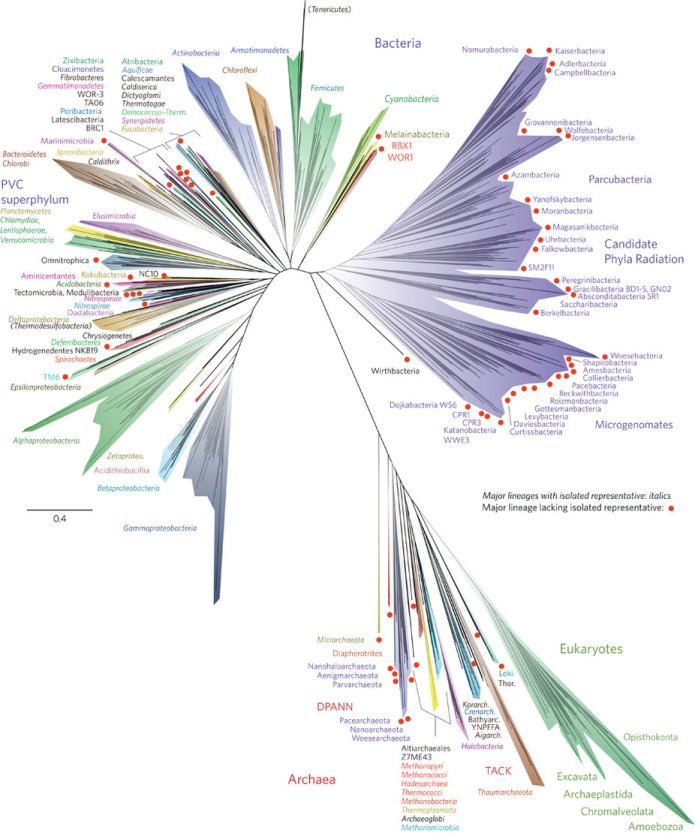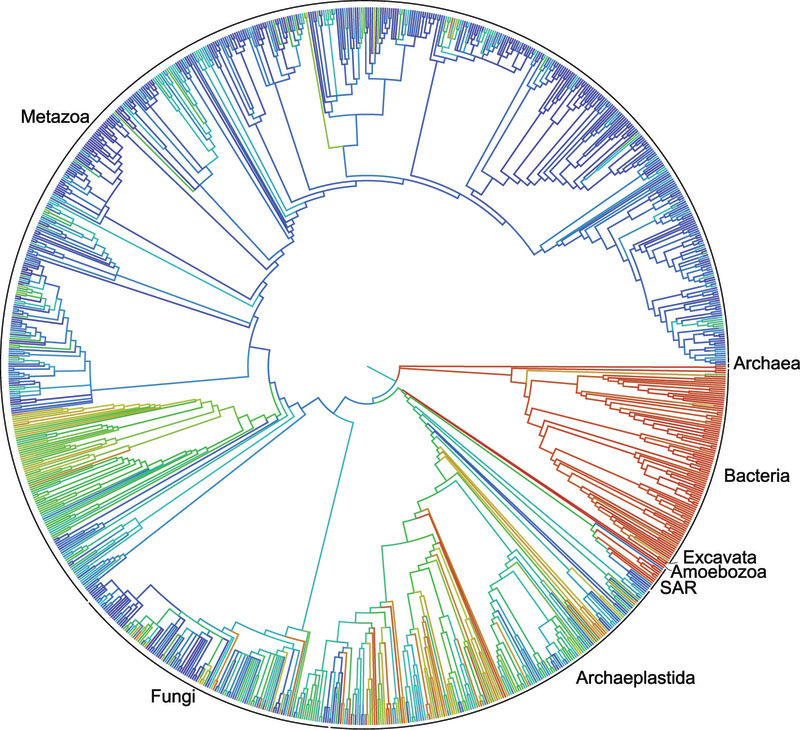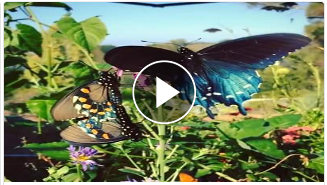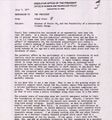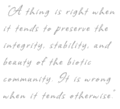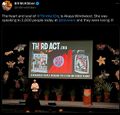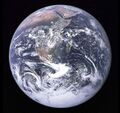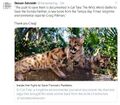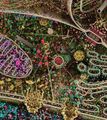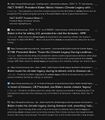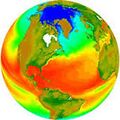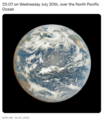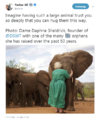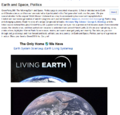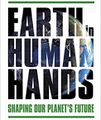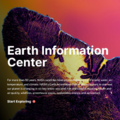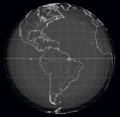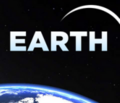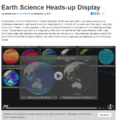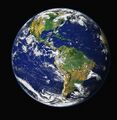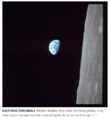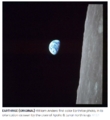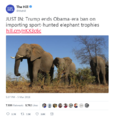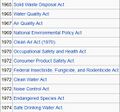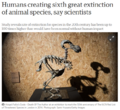Category:Biodiversity: Difference between revisions
Siterunner (talk | contribs) No edit summary |
Siterunner (talk | contribs) No edit summary |
||
| Line 4: | Line 4: | ||
[https://s3.amazonaws.com/wwfassets/downloads/lpr2018_summary_report_spreads.pdf <big><big> | [https://s3.amazonaws.com/wwfassets/downloads/lpr2018_summary_report_spreads.pdf <big><big>'''Living Planet Report 2018'''</big></big>] | ||
* [http://wwf.panda.org/knowledge_hub/all_publications/living_planet_report_2018/ Animal populations have declined an astonishing 60 percent since 1970] | * [http://wwf.panda.org/knowledge_hub/all_publications/living_planet_report_2018/ Animal populations have declined an astonishing 60 percent since 1970] | ||
| Line 13: | Line 13: | ||
''This rapid planetary change, referred to as the ‘Great Acceleration’, has brought many benefits to human society. Yet we now also understand that there are multiple connections between the overall rise in our health, wealth, food and security, the unequal distribution of these benefits and the declining state of the Earth’s | ''This rapid planetary change, referred to as the ‘Great Acceleration’, has brought many benefits to human society. Yet we now also understand that there are multiple connections between the overall rise in our health, wealth, food and security, the unequal distribution of these benefits and the declining state of the Earth’s | ||
natural systems. Nature, underpinned by biodiversity, provides a wealth of services, which form the building blocks of modern society; but both nature and biodiversity are disappearing at an alarming rate. Despite well-meaning attempts to stop this loss through global agreements such as the Convention on Biological Diversity, we are failing; current targets and consequent actions amount, at best, to a managed decline. To achieve climate and sustainable development commitments, reversing the loss of nature and biodiversity is critical...'' | natural systems. Nature, underpinned by biodiversity, provides a wealth of services, which form the building blocks of modern society; but both nature and biodiversity are disappearing at an alarming rate. Despite well-meaning attempts to stop this loss through global agreements such as the Convention on Biological Diversity, we are failing; current targets and consequent actions amount, at best, to a managed decline. To achieve climate and sustainable development commitments, reversing the loss of nature and biodiversity is critical...'' | ||
Revision as of 17:46, 12 April 2019
<addthis />
We live in an age of rapid and unprecedented planetary change. Indeed, many scientists believe our ever-increasing consumption, and the resulting increased demand for energy, land and water, is driving a new geological epoch: the Anthropocene. It’s the first time in the Earth’s history that a single species – Homo sapiens – has had such a powerful impact on the planet.
This rapid planetary change, referred to as the ‘Great Acceleration’, has brought many benefits to human society. Yet we now also understand that there are multiple connections between the overall rise in our health, wealth, food and security, the unequal distribution of these benefits and the declining state of the Earth’s natural systems. Nature, underpinned by biodiversity, provides a wealth of services, which form the building blocks of modern society; but both nature and biodiversity are disappearing at an alarming rate. Despite well-meaning attempts to stop this loss through global agreements such as the Convention on Biological Diversity, we are failing; current targets and consequent actions amount, at best, to a managed decline. To achieve climate and sustainable development commitments, reversing the loss of nature and biodiversity is critical...
An Unseen World
The 'Tiny Little Ones'
- Microbiomes full of untapped secrets
Connections & Communities
····················································
Micro- to Macro- ... from the Tiny (as in Tiny Blue Green) 'Micro-Organisms' to the Largest 'Macro-Creatures'
Biodiversity Topics / Wikipedia
Extinction Issues / GreenPolicy -- http://www.greenpolicy360.net/w/Extinction
Trillions of (micro) species -- https://cosmosmagazine.com/life-sciences/earth-home-trillion-species
Microbial 'new' Tree of Life -- http://www.nytimes.com/2016/04/12/science/scientists-unveil-new-tree-of-life.html
○
Do Insects Count? Who Cares About Insects, Right? Wrong?
····················································
Saving Species, Notes from the Edge
The botanists’ last stand: The daring work of saving the last samples of dying species
 Save a Butterfly, Save a Species / July 31
Save a Butterfly, Save a Species / July 31
- http://www.boredpanda.com/rare-blue-swallowtail-pipevine-butterfly-repopulation-tim-wong/
○ ○ ○ ○ ○ ○ ○ ○ ○
Tree of Life
Tree of Life
Announced September 2015 / http://www.greenpolicy360.net/w/Tree_of_Life
The first draft of ‘Tree of Life’ data diagrams include 2.3 million species -- The goal of reconstructing the tree of life is one of the most daunting challenges in biology. The scope of the problem is immense... most species have yet to be described. Despite decades of effort and thousands of phylogenetic studies on diverse clades, we lack a comprehensive tree of life, or even a summary of our current knowledge. One reason for this shortcoming is lack of data...
○ ○ ○ ○ ○ ○ ○ ○ ○ ○ ○ ○
The ecologist's field guide to sequence-based identification of biodiversity
Keywords: DNA sequencing; metabarcoding; metagenomics; metatranscriptomics; molecular ecology; biodiversity
○
Nature was always present... It was participant, impetus, and catalyst. It was the riches that made nations wealthy and powerful, and over which their armies; it was the wildness our ancestors insisted on taming, the scourge that left them despairing, and the blessing that kept them alive. How and where and by what design people built their homes and businesses depended on natural conditions and endowments. Inspirations for what people wrote and painted, what they wore, and said to each other, how they planned their day and spent their leisure time, and what they chose as a livelihood all flowed from an organic setting. Nature shaped strategies in war and gave form to economics, and its wealth or privation determined that of people and their enterprises.
- -- The Gulf
- by Jack E. Davis
○
The Rich Biosphere of the Rainforest Canopy, "Cradle of New Life Forms"
SJS / GreenPolicy Siterunner:
January 2013
I want to say a few words about Don Perry, Dr. Perry, who swung in and posted a couple comments yesterday about climate change, global warming and its coming impacts.
Be aware, Don is not your standard scientist who has dwelt in academia, collecting accolades and plaudits for his lifetime of work and explorations of the bio-universe. Don has gone on from UCLA to literally change the way we see our world.
As I used to say about Don, when we were working together back when I lived in LA and he was starting his career that would revolutionize the science of tropical forest study, Don is unique in his field, he's a pioneer (and "bioneer"), he's an explorer, an inventor. Don invented new techniques and methods for ascending and studying the 'real jungle', up above far from LA's glam, and proceeded to enable and show us what the resplendent, amazing rainforest, the richest biosphere on earth, the canopy, was like and it was wonderful... first-ever pictures and reports and science from on high. I was privileged to help as his representative and we saw Don's visions reach audiences around the world as he opened eyes to the eco-wonders of the environment we live in and the world we came from long ago, that is, if you believe in evolution... Don was a "Jacques Cousteau of the Rainforest Canopy." I meant the words when I said them and still do. Don's pioneering work has been featured in Scientific American, National Geographic, Smithsonian, New York Sunday Times magazine, Life, Newsweek, Paris Match, Quick of Germany, Popular Science, and many more popular and scientific media.
I have to say that Don's career is one-of-a-kind, an unparalleled feat of brave, courageous ascents and creative imagination and engineering that followed...
○
Subcategories
This category has the following 31 subcategories, out of 31 total.
Pages in category "Biodiversity"
The following 160 pages are in this category, out of 160 total.
A
B
C
- C40 Cities Climate Leadership Group
- Caloundra, Australia Biodiversity Strategy 2006
- Capitalism and the Environment
- Citizen Science
- Climate News
- Climate News Events Archive ... 1970 to Today
- Climate Problems, Climate Solutions
- Conservation biology
- Conservation movement
- Convention on Biological Diversity
- Convention on the Conservation of Migratory Species of Wild Animals
- Cork, Ireland City Biodiversity Plan
D
E
- Earth and Space, Politics
- Earth Day
- Earth Day 2020
- Earth Day Is Every Day
- Earth Day Memories on the 50th Anniversary
- Earth Science
- Earth Science Research from Space
- Earth Science Vital Signs
- Earthrise
- Ecolivia
- Ecotourism
- Edinburgh, Scotland Biodiversity Action Plan
- Endangered species
- Endangered Species Recovery Plan
- Environmental agreements
- Environmental full-cost accounting
- Environmental Law, Rollbacks under Trump 2016-20
- Environmental Laws and Modern Environmental Movement
- Environmental movement
- Environmental protection
- Environmental Protection Agency
- Environmental Security Organizations
- Environmental Studies Online
- EOS eco Operating System
- Extinction
G
- GDP+
- Generation Green
- George E. Brown Jr
- Global Fishing Watch
- Global Forest Watch
- Google Earth Timelapse
- GP360 NewPages
- Green Development Initiative (GDI)
- Green Education
- Green Politics 360
- Green Quotes
- Green Stories of the Day
- Green Stories of the Day - GreenPolicy360 Archive
- GreenAction
- Greening Our Blue Planet
- GreenLinks
- GreenPolicy360 (eOS)
- GreenPolicy360 Archive Highlights 2013
- GreenPolicy360 Archive Highlights 2014
- GreenPolicy360 Archive Highlights 2015
- GreenPolicy360 Archive Highlights 2016
- GreenPolicy360 Archive Highlights 2017
- GreenPolicy360 Archive Highlights 2018
- GreenPolicy360 Archive Highlights 2019
- GreenPolicy360 Archive Highlights 2020
- GreenPolicy360 Archive Highlights 2023
- GreenPolicy360 Highlights
I
- INaturalist
- INDCs
- Intended Nationally Determined Contributions
- Intergovernmental Science-Policy Platform on Biodiversity and Ecosystem Services
- International Treaty on Plant Genetic Resources for Food and Agriculture
- International Year of Biodiversity
- IPBES, Biodiversity and Extinction
- It's All Related
L
N
P
R
S
U
Media in category "Biodiversity"
The following 200 files are in this category, out of 615 total.
(previous page) (next page)- 1977 from the Office of Science and Technology Policy.jpg 661 × 711; 177 KB
- 3M lawsuit re forever chemicals - June 2023.png 603 × 600; 357 KB
- A Brief History of the Future - 2s.jpg 448 × 309; 70 KB
- A Fierce Green Fire.jpg 208 × 314; 13 KB
- A land ethic .jpg 864 × 668; 79 KB
- A Planet Citizen View.png 799 × 1,241; 1.64 MB
- A root and its mycorrhizal fungus surroundings.PNG 315 × 382; 236 KB
- A scorching year, what about the 360 warming data.jpg 600 × 706; 106 KB
- AB 2480 Meadows and Forest Water Infrastructure.png 481 × 375; 248 KB
- About Baselines and Change.png 592 × 312; 33 KB
- Against the Tide by Cornelia Dean.jpg 600 × 800; 265 KB
- Agriculture and seeds.jpg 1,920 × 1,080; 1.16 MB
- Alabama - river watershed diversity.jpg 396 × 512; 34 KB
- Aldo quote.gif 309 × 280; 7 KB
- Algae release -nikon-small-world-competition-2017-winners.jpg 640 × 576; 89 KB
- All species day with homo sapien in Santa Fe .jpg 640 × 369; 98 KB
- All species day.jpg 1,280 × 737; 272 KB
- Amazon-rainforest (2).jpg 600 × 338; 68 KB
- Amazon-rainforest (3).jpg 300 × 225; 57 KB
- Amazon-rainforest.jpg 814 × 459; 142 KB
- American Amazon - Mobile River Basin.jpg 800 × 159; 64 KB
- Anthro-transport via globaia.org.jpg 800 × 450; 444 KB
- Anthropocene bks016.png 800 × 248; 227 KB
- Anthropocene Economist.png 775 × 349; 369 KB
- Anthropocene-550x360.png 550 × 360; 335 KB
- Anthropocene-crutzen.jpg 628 × 347; 79 KB
- Anthropocene-economist cover.jpg 750 × 320; 223 KB
- Anthropocene-nature March2015.jpg 747 × 407; 103 KB
- Anthropocene-the-geology-of-humanity.jpg 628 × 347; 79 KB
- Apple varietals.jpg 600 × 314; 30 KB
- April 28, 2016.png 586 × 415; 159 KB
- Arable land percent world.png 1,357 × 628; 40 KB
- ArcGIS-logo.png 302 × 167; 7 KB
- AskNatureAvatar s.png 200 × 200; 14 KB
- Aspen Trees Fall Colors Web-of-Roots Connected Wiki commons.jpg 800 × 533; 171 KB
- Astro POV - Mike Massimino - PlanetCitizen.png 800 × 466; 792 KB
- Astro Samantha.png 448 × 266; 78 KB
- At st peters endangered species.png 717 × 431; 242 KB
- Audubon - Photo by Shari McCollough.jpg 795 × 559; 76 KB
- Audubon study ms.png 529 × 434; 437 KB
- Audubon study s.png 342 × 40; 8 KB
- Aurora Time.png 829 × 780; 544 KB
- Battle for Democracy.jpg 640 × 123; 24 KB
- Be kind-2.jpg 250 × 164; 20 KB
- Before the Whoosh Transformation.jpg 327 × 267; 39 KB
- Bernie Sanders, Senate 2.PNG 800 × 517; 379 KB
- Bernie Sanders, Senate Aug 3.PNG 800 × 518; 388 KB
- Biden re Earth Day 2023.png 640 × 400; 155 KB
- Biden-Harris, CNN News Online - Nov 8, 2020.jpg 800 × 484; 114 KB
- Big Wobble 2020.jpg 507 × 342; 79 KB
- Bill Mollison 1928-2016.pdf ; 99 KB
- Bill Mollison courtesy of Permaculture magazine.jpg 460 × 300; 0 bytes
- Bill Mollison the day after his passing memories.png 1,381 × 651; 1.65 MB
- Bill Nye The Planet's on Fire.jpg 800 × 675; 106 KB
- Biodiversity more than counting species.png 640 × 132; 55 KB
- Biodiversity-by-dreamchaotic.jpg 600 × 173; 66 KB
- Bioneers 2023 - ThirdAct.Org.jpg 624 × 600; 145 KB
- Bioneers conf 2016.png 700 × 499; 1.03 MB
- Bioneers Conf 2021- Buckminster Fuller Instit joins.png 469 × 586; 599 KB
- Bioneers conference 2018-o.jpg 800 × 400; 134 KB
- Bioneers conference 2019 - 30 years anniv.jpg 800 × 400; 129 KB
- Bioneers It's all connected - 30th annual conference.jpg 527 × 521; 79 KB
- Bioneers2014 m.jpg 257 × 108; 15 KB
- Blog-soil.jpg 722 × 491; 58 KB
- Blue Marble photo taken by the crew of Apollo 17 (1972).jpg 642 × 605; 129 KB
- Blue Planet II.png 800 × 425; 674 KB
- Blue-Green & Planet Citizens, Planet Scientists.png 549 × 844; 94 KB
- Blue-green phyto swirling 2015.png 357 × 605; 409 KB
- Borneo Eared Frog.jpg 727 × 485; 84 KB
- Brazil INDC 2015.png 592 × 366; 301 KB
- Bucky Trimtab.jpg 348 × 336; 88 KB
- Bug eyes in the rainforest canopy Photo by Don Perry-2.jpg 300 × 576; 24 KB
- Bug eyes in the rainforest canopy Photo by Don Perry.jpg 391 × 576; 27 KB
- California Pipevine Swallowtail Project butterflies.png 327 × 185; 132 KB
- California's kelp forests and coastal biodiversity diminished.png 532 × 754; 307 KB
- Canary - 1.jpg 448 × 901; 144 KB
- Canary - 2.png 446 × 531; 264 KB
- Carl Sagan at the Emerging Issues Forum - 1990.png 360 × 460; 192 KB
- Carl Sagan at the Emerging Issues Forum.png 747 × 600; 600 KB
- Carl Sagan, 1985.PNG 480 × 566; 331 KB
- Carl Sagan, the atmosphere unifies and connects all of our world.png 360 × 390; 229 KB
- Casey Camp-Horinek.jpg 606 × 650; 132 KB
- Cat Tale by Craig Pittman.jpg 589 × 517; 105 KB
- Celebrating 50 Years of Landsat.png 600 × 610; 909 KB
- Cellular Landscape.jpg 300 × 336; 44 KB
- Charles-Darwin-Smithsonian.jpg 631 × 300; 87 KB
- Chasing Coral.jpg 800 × 437; 65 KB
- Cisterns rebateprogram.jpg 628 × 390; 355 KB
- Citizen of the planet girl.jpg 400 × 265; 35 KB
- Citizens Climate Lobby - Save Our Future Act 2021.jpg 518 × 262; 77 KB
- Climate Change from Space - Climate Kit via ESA - 2022.png 800 × 421; 651 KB
- Climate Goals off course - 2018.png 800 × 556; 214 KB
- Climate Legacy of Biden.jpg 600 × 687; 265 KB
- Climate News Dec 4 2023 in Dubai.png 800 × 1,037; 649 KB
- Climate Plan pledges as Oct6,2015.png 529 × 409; 101 KB
- Climate Plans Enforcement - Resources - GreenPolicy.png 768 × 897; 686 KB
- Climate poll - Florida.png 640 × 267; 36 KB
- Climate-Action-Plan-World Bank-2016.png 780 × 6,050; 3.2 MB
- ClimateNews 360.jpg 172 × 172; 9 KB
- Common Ground, the Movie.png 600 × 756; 775 KB
- Congressman george.e.brown.gif 235 × 305; 41 KB
- Connect with Nature.png 405 × 280; 17 KB
- Consumption & Extinction.png 331 × 207; 18 KB
- COP28 News - Dec 13 2023.png 800 × 898; 410 KB
- CopernicusEU - Sentinel5P Atmosphere Monitoring Mission - 2.jpg 795 × 1,477; 654 KB
- CopernicusEU - Sentinel5P Atmosphere Monitoring Mission.png 583 × 465; 222 KB
- Coral bleached 720.jpg 720 × 405; 276 KB
- Coral bleaching Great Barrier Reef 2016.jpeg 630 × 472; 91 KB
- Coral growing-Mott Lab,Florida.jpg 800 × 382; 114 KB
- Coral reef rejuvenation-montage.png 569 × 236; 318 KB
- Cradle of Civilization - and climate change.jpg 640 × 360; 70 KB
- Cyanobacteria Prochlorococcus worldmapping MIT.jpg 473 × 321; 60 KB
- Daisy Chain Hippie.jpg 564 × 362; 30 KB
- David-brower-environmental-movement-cover.jpg 530 × 800; 89 KB
- Degrading.png 600 × 288; 27 KB
- Dirt, soil, worms, good.png 700 × 399; 695 KB
- Discover Your Planet.png 1,176 × 608; 1.11 MB
- Discovery Center, St Pete Pier, Living Shorelines.jpg 800 × 530; 118 KB
- Don Perry In the Canopy first-gen canopy web.jpg 720 × 487; 81 KB
- DON PERRY RAIN-FOREST-AERIAL-TRAM m.jpg 475 × 707; 139 KB
- Don Perry SmithsonianCover.jpg 700 × 967; 873 KB
- Don Perry, Life Above the Jungle Floor.jpg 600 × 800; 191 KB
- Don Perry-credit-Roberta-Halsey.jpg 645 × 960; 114 KB
- Dove1 image.jpg 420 × 308; 26 KB
- Dragonfly Eyes.jpg 800 × 534; 68 KB
- Dragonfly3.jpg 700 × 464; 36 KB
- DSCOVR EPIC - July 20 2022.png 532 × 612; 315 KB
- DSWT-Daphne hugging elephant adoptee.png 631 × 756; 477 KB
- Earth AI - Feb 2022.png 482 × 480; 192 KB
- Earth and Space, Politics.png 796 × 765; 349 KB
- Earth Breathing.jpg 800 × 450; 117 KB
- Earth Day - DSCOVR-EPIC 2019.jpg 800 × 772; 150 KB
- Earth Day 2022 - Act up.png 457 × 370; 155 KB
- Earth Day Flag.png 400 × 267; 69 KB
- Earth Day memories.png 800 × 210; 381 KB
- Earth Emoji.png 50 × 50; 2 KB
- Earth in Human Hands Intro.png 622 × 423; 121 KB
- Earth in Human Hands.jpg 325 × 385; 34 KB
- Earth Information Center - 2022 Graphic NASA.png 800 × 981; 868 KB
- Earth Information Center - NASA 336.png 336 × 336; 279 KB
- Earth Information Center - NASA.png 768 × 769; 1.21 MB
- Earth Information Center from NASA.jpg 800 × 577; 94 KB
- Earth mapped.png 800 × 783; 254 KB
- Earth Observing System - fleet of satellites.png 740 × 576; 557 KB
- Earth POV from the ISS Cupola-m.jpg 800 × 480; 71 KB
- Earth s.png 194 × 167; 40 KB
- Earth Science Vital Signs, Pulse of the Planet EOS NASA 2014.png 758 × 776; 366 KB
- Earth System Observatory-1.jpg 580 × 833; 129 KB
- Earth System Observatory-2.jpg 580 × 831; 69 KB
- Earth Viewing from the International Space Station.jpg 496 × 307; 45 KB
- Earth, our home, 7.7 billion humans on that dot of life.jpg 680 × 680; 50 KB
- Earth-Day.png 336 × 336; 55 KB
- EARTH-ISLAND-LOGO.png 314 × 148; 12 KB
- Earth-science.png 265 × 83; 13 KB
- Earth360 Nasa blue marble s.jpg 275 × 282; 0 bytes
- EarthDayatNASA .jpg 1,088 × 870; 745 KB
- EarthDayatNASA 2.jpg 750 × 600; 339 KB
- EarthDecadel Priorities-2018.jpg 779 × 529; 85 KB
- Earthrise (NASA original Anders photo ).png 665 × 723; 539 KB
- Earthrise - NASA original Anders photo.png 665 × 723; 539 KB
- Earthrise Planetary Awareness.jpg 768 × 992; 103 KB
- Earths rotation as we roll thru space.jpg 800 × 529; 69 KB
- EarthScience Missions via the EOS - 2022.png 800 × 219; 139 KB
- Ebird-mobile-apps.png 800 × 338; 166 KB
- ECO-NOMICS.jpg 419 × 131; 0 bytes
- Ecoregions of the World terrestrial-wiki.jpg 800 × 400; 33 KB
- ECOTRAM - Don Perry.png 800 × 474; 390 KB
- Einstein - the whole of nature 1.PNG 444 × 619; 216 KB
- Einstein - the whole of nature 2.JPG 680 × 623; 110 KB
- Elephant herd from the End of the Game-by Peter Beard.jpg 800 × 544; 198 KB
- Elephant trophies.png 623 × 656; 366 KB
- Energy - Electric Measuring and Monitoring.png 715 × 1,978; 862 KB
- Env policy laws US 'the beginning' of env era.jpg 370 × 345; 65 KB
- Envir earth day 1970.jpg 197 × 295; 13 KB
- Environmental Justice and Environmental Law.jpg 274 × 668; 108 KB
- Environmental Studies-Documerica.png 688 × 963; 522 KB
- EnvironmentalSecurity ThinBlue.png 223 × 248; 94 KB
- EnvirSecurity.png 558 × 166; 155 KB
- EnvSecurity.jpg 245 × 71; 13 KB
- EO and Fire Ants in the US - on World Wildlife Day.png 768 × 811; 663 KB
- EOS starliner gr2.png 320 × 91; 3 KB
- EOS sunflowers-gp.jpg 800 × 534; 491 KB
- EPA History Xin Liu-2010.pdf ; 2.88 MB
- EPA rollbacks - neonicotinoids.jpg 457 × 810; 153 KB
- ESG Fight - Feb 2023.png 396 × 194; 88 KB
- ESRI logo.jpg 366 × 138; 10 KB
- Estuary in Clearwater on Tampa Bay.jpg 3,584 × 2,016; 1.5 MB
- Eukaryotic Cell SCU.jpg 716 × 1,024; 799 KB
- Eunice Foote Illustration climate.gov.jpg 620 × 296; 55 KB
- Extinction sixthgreatextinction ohDodo.png 642 × 590; 487 KB
- Eyes of the Animal 1a.png 905 × 471; 542 KB
- Eyes On Global Security Threats - via Strategic Demands April 2022.png 600 × 776; 308 KB
- Fact Checking organizations at work.jpg 800 × 390; 44 KB

